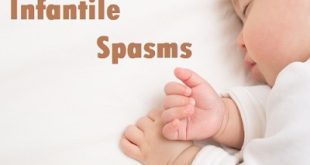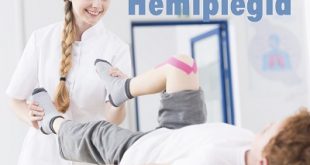What are Neurocutaneous Syndromes?
Neurocutaneous syndromes is the term used for a group of rare neurological disorders that affect the brain, spinal cord, organs, skin, bones and peripheral nerve. Present at birth (congenital), these disorders are chronic, lifelong conditions. Each disorder has different symptoms, and can include tumors, hearing loss, seizures, and developmental problems. These disorders cannot be cured, but treatment is available to help manage symptoms and related health problems. While some of these syndromes can be diagnosed at birth, others don’t have symptoms until later in life.
What are the most common Neurocutaneous Syndromes?
The most common types of syndromes are:
Tuberous sclerosis complex (TSC), the most common type, has symptoms that range from hard-to-treat epilepsy, to mental retardation or autism. It involves multiple organs including heart, lungs, skin, kidneys, in addition to the central nervous system.
Neurofibromatosis (NF), including NF1, NF2, and Schwannomatosis cause multiple tumors in the nervous system. The tumors express themselves in the skin, and in both the peripheral and central nervous systems. Neurofibroma tumors are the most common type; schwannomas are less common. Although tumors are usually noncancerous (benign), some may have potential for cancer growth (malignancy).
Schwannomatosis is a rare form of NF and most cases are caused by genetic mutations. The two genetic forms: are: Schwannomatosis 1 (caused by gene mutations in the SWNTS1 gene); and Schwannomatosis 2, which begins in adulthood, causing benign, encapsulated tumors throughout the body.
Sturge-Weber syndrome is of unknown cause and occurs by chance (sporadic). In some cases, other family members have hemangiomas (benign growths that are made of blood vessels). This disease includes a port-wine stain on the face and usually an angioma. It can cause seizures and/or neurologic deficits, and glaucoma (excess pressure in the eye).
Von Hippel-Lindau syndrome causes multiple organs to develop multiple tumors, including tumors in the brain, renal cells, pancreas, and vascular tumors.
What causes the Neurocutaneous Syndromes in a child?
These diseases are all present at birth (congenital). They are caused by gene changes.
Tuberous sclerosis (TS) is an autosomal dominant disorder. Autosomal means that both boys and girls are affected. Dominant means that only 1 copy of the gene is needed to have the condition. A parent with TS or the gene for TS has a 50% chance to pass the gene on to each child. Many children born with TS are the first cases in a family. This is because most cases of TS are caused by a new gene change (mutation), and are not inherited. But the parents of a child with TS may have very mild symptoms of the disorder. The parents are believed to have a slightly increased risk of having another child with TS.
Neurofibromatosis Type 1 (NF1) occurs in about 1 in 3,000 to 4,000 babies in the U.S. NF1 is an autosomal dominant disorder. It’s caused by changes in a gene on chromosome 17. In half of the cases, this is inherited from a parent with the disease.
Neurofibromatosis Type 2 (NF2) is less common, is also an autosomal dominant disorder. It affects about 1 in 25,000 babies in the U.S. The gene change that causes NF2 is on chromosome 22.
A parent with NF has a 1 in 2 chance of passing on the genetic mutation and disease to each child.
NF may also be the result of a new gene change. From 3 in 10 to 1 in 2 cases of NF are caused by a new mutation and not inherited. Boys and girls are equally affected.
Schwannomatosis is a form of NF. It’s rare, and only 3 in 20 cases are inherited. There are 2 genetic forms of schwannomatosis:
- Schwannomatosis 1. This is caused by mutations in either the SMARCB1 or LZTR1 genes. This condition is also known as congenital cutaneous neurilemmomatosis.
- Schwannomatosis 2. This condition starts in adulthood. It causes schwannomas (benign nerve tumors) to grow throughout the body. But it has no other symptoms.
The cause of Sturge-Weber disease is not known. Researchers think it occurs by chance (sporadic). In some cases, other family members have hemangiomas. These are noncancer (benign) growths that are made of blood vessels. Some children with this condition may have mutations in a gene called GNAQ.
Which children are at risk for Neurocutaneous Syndromes?
A child is more at risk for a neurocutaneous syndrome if he or she has a family member with one of the syndromes.
What are the symptoms of neurocutaneous syndromes?
The child may have varying degrees of symptoms associated with each condition. The following are the most common symptoms of tuberous sclerosis, neurofibromatosis, and Sturge-Weber disease. Symptoms may include:
Tuberous sclerosis. Growths, called tubers, are often found growing inside of the brain and retinal area of the eye. Tuberous sclerosis affects many organs in the body including the brain, spinal cord, lungs, heart, kidneys, skin, and skeletal bones in the child. Intellectual disability, developmental delays, seizures, and learning disabilities are also associated with this disease.
Neurofibromatosis (NF). There are three distinct types of NF, classified as NF I, NF II, and schwannomatosis:
- Neurofibromatosis I. This is the more common of the two disorders. It is also called Von Recklinghausen’s disease. The classic symptom of NF I is light brown patches of pigment on the skin, called cafe-au-lait spots. Benign (non-cancerous) skin tumors associated with this condition are called neurofibromas. Neurofibromas are often found growing on the nerves and in various organs of the child’s body. There is a high rate of brain tumors in patients associated with NF. Less than one percent of individuals with NF will have malignant (cancerous) changes in the neurofibromas. Lisch nodules, which are small tumors on the iris (colored part of the eye), may appear around adolescence, but usually do not cause problems. Hearing loss, headaches, seizures, scoliosis, and facial pain or numbness may also be present. Intellectual disability is present in up to one percent of individuals with neurofibromatosis I, while other children may have learning problems and hyperactivity.
Cafe-au-Lait Spots
Lisch Nodules
- Neurofibromatosis II. According to the NINDS, this type of neurofibromatosis affects approximately one in 25,000 people, and symptoms are usually noticed between 18 and 22 years of age. It is known as bilateral acoustic neurofibromatosis and is less common. This disease is characterized by tumors on the eighth cranial nerve, which can lead to hearing loss, headaches, problems with facial movements, problems with balance, and difficulty walking. Hearing loss may be noted as early as the teenage years. Other clinical signs of NF II may include seizures, neurofibromas (skin nodules), and cafe-au-lait spots (although these are not nearly as common as in NF I).
- Schwannomatosis. The primary feature that distinguishes schwannomatosis from NF1 and NF2 is the growth of multiple schwannomas throughout the body except the vestibular nerve is not involved. Extremely intense pain is the main symptom, which occurs when a schwannoma becomes larger or presses on a nerve or nearby tissue. Other symptoms that may be experienced include numbness, tingling, or weakness in the fingers and the toes.
Sturge-Weber disease. The classic symptom of this disease is a port wine stain located on the child’s face, typically near or around the eye and forehead areas. A port wine stain is present from birth and is a flat area on the child that varies in color from red to dark purple.
The birthmark is caused by the formation of too many tiny blood vessels under the skin. There may also be associated brain abnormalities on the same side of the brain as the face lesion. Neurological changes that occur with this condition may include seizures, muscle weakness, changes in vision, and intellectual disability. Glaucoma (a condition that causes increased pressure in the eye) may also be present at birth. Unlike tuberous sclerosis and NF, Sturge-Weber disease does not affect the other organs of the body.
The symptoms of neurocutaneous syndromes may resemble other conditions. Always consult your child’s doctor for a diagnosis.
Complications based on types of Neurocutaneous Syndromes
Tuberous sclerosis
Many people will have a normal lifespan, although a number of life-threatening complications can develop. These include a loss of kidney function, a serious lung infection called bronchopneumonia and a severe type of epileptic seizure called status epilepticus.
People with tuberous sclerosis may also have an increased risk of developing certain types of cancer, such as kidney cancer, but this is rare.
Neurofibromatosis
Complications of neurofibromatosis vary, even within the same family. Generally, complications result from tumors that affect nerve tissue or press on internal organs.
NF1 complications
- Neurological problems
- Concerns with appearance
- Skeletal problems
- Vision problems
- Problems during times of hormonal change
- Cardiovascular problems
- Breathing problems
- Cancer
- Benign adrenal gland tumor
NF2 complications
Complications of NF2 include:
- Partial or total deafness
- Facial nerve damage
- Vision problems
- Small benign skin tumors (skin schwannomas)
- Weakness or numbness in the extremities
- Multiple benign brain tumors or spinal tumors (meningiomas) requiring frequent surgeries
Schwannomatosis complications
The pain caused by schwannomatosis can be debilitating and may require surgical treatment or management by a pain specialist.
How are Neurocutaneous Syndromes diagnosed in a child?
The healthcare provider will ask about your child’s symptoms, health history, and developmental milestones. He or she may also ask about your family’s health history. He or she will give your child a physical exam. Your child may also have tests, such as:
- Genetic tests. These are blood tests. They check for health conditions that tend to run in families.
- MRI. This test uses large magnets, radio waves, and a computer to make images of the inside of the body.
- CT scan. This test uses a series of X-rays and a computer to create images of the inside of the body. A CT scan shows more detail than a regular X-ray.
- Electroencephalogram (EEG). This test records the brain’s electrical activity through sticky pads (electrodes) attached to the scalp.
- Eye exam. This is done to check for growths on the retina and excess pressure in the eye.
- Biopsy. A small sample of tissue from a tumor or skin lesion may be taken. This is checked with a microscope.
Treatment of Neurocutaneous Syndromes
Specific treatment for neurocutaneous syndromes will be determined by your child’s physician based on:
- Your child’s age, overall health, and medical history.
- The extent of the condition.
- The type of condition.
- Your child’s tolerance for specific medications, procedures, or therapies.
- Expectations for the course of the condition.
- Your opinion or preference.
Since neurocutaneous syndromes are life-long conditions that are not curable, the focus is on medically managing the symptoms. A child is best treated with an interdisciplinary team that may include the following healthcare providers:
- Pediatrician/family practitioner.
- Neurologist – a physician who specializes in conditions of the brain, nerves, and spinal cord.
- Neurosurgeon – a surgeon who specializes in operating on the brain and spinal cord.
- Orthopedic surgeon – a surgeon who specializes in conditions of the muscles, tendons, ligaments, and bone.
- Ophthalmologist – a physician who specializes in conditions of the eye.
- Nurse
- Rehabilitation team (physical, occupational, speech therapy, audiology)
Surgery may be needed to remove tumors that may be cancerous, as well as for cosmetic reasons.
Life-long considerations for a child with neurocutaneous syndromes:
- Since tuberous sclerosis, NF, and Sturge-Weber disease are life-long conditions that are not correctable, management includes focusing on preventing or minimizing deformities and maximizing the child’s capabilities at home and in the community. Positive reinforcement will encourage the child to strengthen his/her self-esteem and promote independence.
- The full extent of the disease is usually not completely understood immediately after birth, but may be revealed as the child grows and develops.
- Genetic counselling may be recommended by the physician to provide information on the recurrence risks for these disorders and any available testing.
How Can Parents Help?
Early intervention is important to help your child achieve the best quality of life possible.
It’s important that your child is cared for by a team of medical experts. Treatment should prevent or minimize complications and maximize a child’s strengths. Keep these tips in mind:
- Positive reinforcement can strengthen your child’s self-esteem and foster a sense of independence. Let your child find out what he or she is capable of, especially regarding daily living skills.
- Support groups can be help helpful, so seek out local chapters that address your child’s particular illness. They provide a supportive social environment, and are a great way to share knowledge and resources.
- Psychotherapy or other supportive treatments can boost your child’s self-esteem and coping skills, so ask the treatment team for referrals. Therapy also can help other family members deal with the stress involved in caring for a child with a chronic illness or disability.
- Physical, occupational, or speech therapy can help your child improve some of the developmental delays caused by the specific illness.
- Check with your local hospital or university for seminars about neurocutaneous syndromes.
 Diseases Treatments Dictionary This is complete solution to read all diseases treatments Which covers Prevention, Causes, Symptoms, Medical Terms, Drugs, Prescription, Natural Remedies with cures and Treatments. Most of the common diseases were listed in names, split with categories.
Diseases Treatments Dictionary This is complete solution to read all diseases treatments Which covers Prevention, Causes, Symptoms, Medical Terms, Drugs, Prescription, Natural Remedies with cures and Treatments. Most of the common diseases were listed in names, split with categories.







